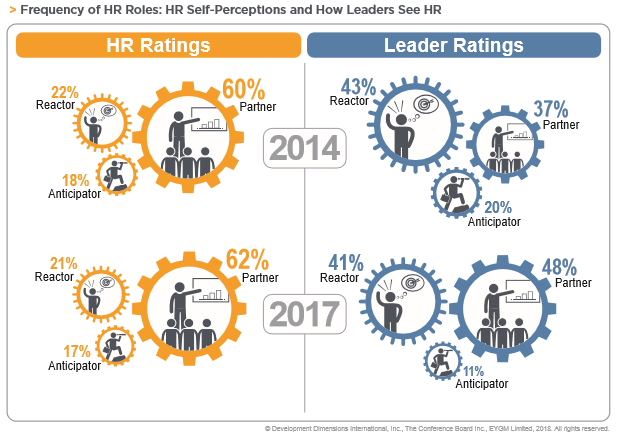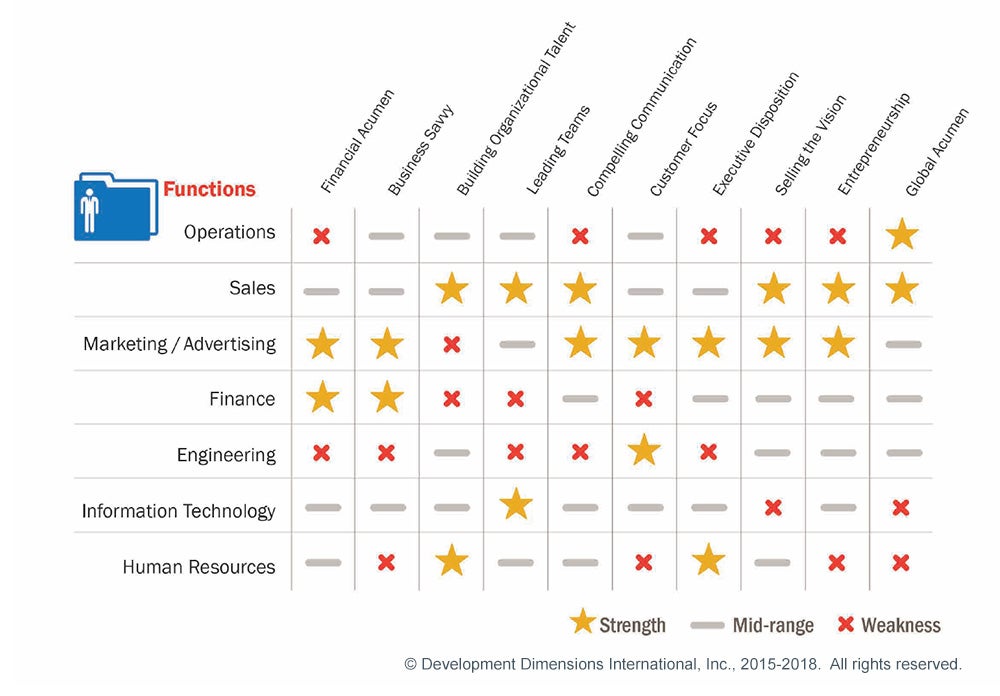Is HR destined to be the dinosaur of the corporate world?
I have been worrying about this recently. Will the toddlers of today grow up to work for a company that has an HR team or function? I believe that it is and will continue to be desperately needed—to have a group that focuses on enabling company talent, that can support organizations as they navigate through digital transformation and new modes of operation or commercialism. Yet, everywhere I turn, I hear people bemoaning the ineptitude of their HR team. Two of my recent favorites: “The business will come up with the compensation model and just get HR to roll it out, it’s beyond their intellect,” and, “You can invite them to the restructure meeting, but if you think that they will have any input then you will be disappointed.”
What has happened to HR, and the reputation of HR as a valued part of the business? And why does this HR criticism seem to be getting louder?
HR roles: evolving to the "anticipator"
In 2014, I thought we had started to raise awareness and get to the bottom of this issue. DDI had launched a piece of research, The Global Leadership Forecast, in which we shared three types of HR associates with a summary detailed below:
- Reactor: Sets policy, drives compliance, responds to business requests, and installs initiatives.
- Partner: Works for mutual goals, shares information, and promotes HR solutions.
- Anticipator: Uses analytics to forecast, provides insights, ensures high-quality supply of talent, and makes links to business strategies.
At the time, the results were terrifying—only 20 percent of business leaders considered their HR partners to play this coveted anticipator role. Fast forward three years and this figure has dropped to 11 percent. Gulp. Now I understand the increased volume of reproach—the business is getting frustrated.

Who can really blame their impatience for HR to make this change? After all, HR is commonly the group driving for leadership excellence, cultural revolution, and business transformation, despite the stagnation or even regression of its value to the organization. One survey statement really hit me as a summary of the current-day demand for HR—“Don’t just ask for a seat at the table, you should be helping to set it.”
Is this irredeemable or can HR make a change? And what exactly is it that the business wants from HR today?
Let’s not lose sight of the strengths, because there are definitely some defining positives. HR still provides absolute company strength when it comes to demonstrating executive disposition and is often considered the most EQ-smart of the company functions. They are also admired for keeping the people agenda moving and are one of the few teams proactively protecting and building the talent needed to drive commerce.
3 HR planning and development areas
However, in today’s world where organizations must transform and perform in constant harmony, businesses require more from their HR. Leveraging our latest Global Leadership Forecast research from more than 25,000 leaders and our study of 15,000 leadership assessments, let’s explore the three main HR planning and development areas:
- Business and Global Acumen: The Washington Post detailed Mary Barra’s 2013 promotion to head of GM as “the rare CEO who worked in human resources.” Five years on, it remains rare to find CEOs with an HR background, perhaps in part because HR today is not considered to demonstrate skills associated with being entrepreneurial. Survey responses commonly challenged HR to get close to the business / try to understand the business / learn the business. You get the picture. The overwhelming feedback is that HR does not demonstrate a clear link between business strategy and HR planning. This is not just business feedback but HR self-awareness too, as only 28 percent of HR feels that this business-to-people connection is tight.
- Understanding and Using Data: Leveraging an array of data and predictive analytics results in HR associates being 1.7 times more effective than those who do not demonstrate this behavior. The key actions associated with this area seem to be understanding what questions to ask from various business reports, interpreting the numbers accurately, and then doing something with the insights that proactively impacts talent planning. For example, if an HR Business Partner hears of plans to drive growth in India as a profitable market, do they wait to understand what will be asked of them to support this—or do they start looking at past recruitment trends, time to hire locally, and then forecast the number of people required to achieve the strategy, as well as explore potential figures within existing people pools? The latter is what the business craves—that HR understands the business opportunity and finds data to make recommendations or provides informed caution.
- 360-Degree Thinking and Influencing: Although HR is credited with high emotional intelligence and demonstrates reliable executive disposition, these skills need to be re-purposed in the new context of work. Once HR understands the business and leverages data, they will then need to defend their stance with an ability to see the perspective from all sides of the problem. This may result in tougher people consequences because they can truly feel the commercial impact or could conclude in them challenging for the long-term benefits when short-term risks shout the loudest. Whatever the case, seeing all angles will be essential to planning a strategy to influence, which will involve not only their executive disposition, but also the deliberate identification of stakeholder needs and accordingly the creation of an influencing HR plan.

Is your HR house in order?
In summary, my advice to HR directors and c-suite leaders is—make sure that your house is in order before tidying the homes of others. You will drive change and support business execution far more effectively with an army of anticipators in your function. It may not be the first place that your mind goes to when you calculate the company’s talent development budget, but if you continue to do nothing, your team will become extinct.
I don’t want HR huddling around, looking up at their Mary Barra posters in awe. I want hundreds of “Mary’s,” leading all sorts of organizations because their experience in HR gave them the jump start they needed to become world-class CEOs. I want Steve Jobs-like success stories to be rooted in transformations where the leader modeled both the what’s and the how’s, because they grew up in HR. I don’t think this is too much to ask for—we just need to help HR achieve this and stop compliantly observing its demise.
Learn how to become an HR anticipator in our upcoming public workshop, HR Anticipator: Transitioning to Strategic HR, which launches in November in London, UK.
Verity Creedy heads up DDI’s European sales team and is based in London. When she’s not working with clients to identify talent solutions that address their business strategic aims, Verity can be found reading endless Bizzy Bear books with her young daughter, window-shopping at unusual shoe stores, and finding new ways to raise money for Cancer Research UK. If you have any Bizzy Bear favorites, shoe store recommendations, or fundraising ideas, please send them to verity.creedy@ddiworld.com
Topics covered in this blog

